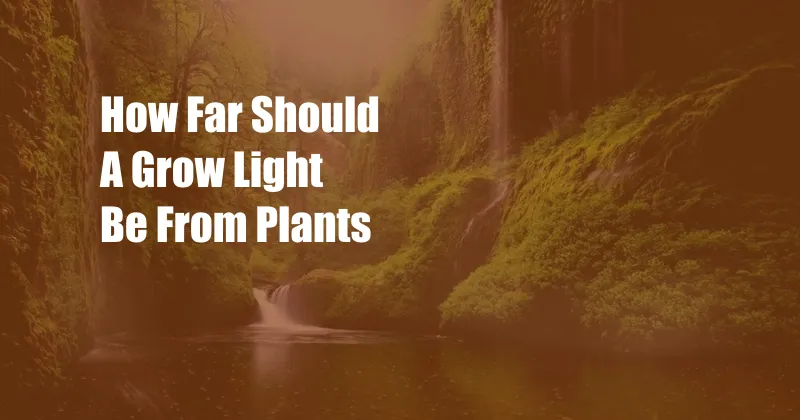
How Far Should a Grow Light Be from Plants? The Ultimate Guide
As an avid gardener, my indoor plants have always been a source of joy and tranquility. However, maintaining their health and vibrancy under artificial lighting proved to be a challenge. One crucial aspect that I often struggled with was determining the optimal distance between my grow light and the plants.
Through extensive research and experimentation, I’ve mastered the art of grow light placement. In this comprehensive guide, I’ll share my knowledge and provide you with all the essential information you need to know about the ideal distance between grow lights and plants.
The Importance of Grow Light Distance
The distance between grow lights and plants plays a vital role in plant growth and development. Too little distance can result in scorching and stunted growth, while too much distance can lead to leggy plants with weak stems. Understanding the optimal distance is crucial for maximizing plant health and productivity.
Factors Influencing Optimal Distance
Several factors influence the ideal distance between grow lights and plants, including:
- Type of plant: Different plant species have varying light requirements. Foliage plants, for example, tolerate lower light levels than fruiting or flowering plants.
- Light intensity: The intensity of the grow light determines how close it can be placed to plants without causing damage.
- Plant stage: The distance may need to be adjusted as plants grow and mature.
Optimal Grow Light Distance Guidelines
To ensure optimal plant growth, follow these general guidelines:
Seedlings: 6-12 inches from the light
Vegetative stage: 12-24 inches from the light
Flowering stage: 12-18 inches from the light
These are just starting points, and the distance may need to be adjusted based on the factors mentioned above. It’s always a good idea to monitor your plants closely and make adjustments as needed.
Tips and Expert Advice
Here are some additional tips from seasoned growers to help you achieve the best results:
- Use a light meter to measure the intensity of your grow light.
- Start with the light at the recommended distance and adjust it gradually as needed.
- Observe your plants for signs of nutrient burn, such as yellowing or brown leaves.
- If you notice any negative symptoms, increase the distance between the light and plants.
Common FAQs
Q: How long should I leave my grow light on?
A: For vegetative growth, aim for 16-18 hours of light per day. During the flowering stage, reduce it to 12-14 hours.
Q: What happens if the grow light is too close to the plants?
A: Too little distance can lead to nutrient burn, stunted growth, and leaf bleaching.
Q: What if the grow light is too far away?
A: Excessive distance can result in leggy plants with weak stems and poor yields.
Conclusion
Determining the optimal distance between grow lights and plants is a critical aspect of indoor gardening. By following the guidelines and tips outlined in this article, you can create the perfect light environment for your plants to thrive and flourish. Remember to monitor your plants closely and make adjustments as necessary. Whether you’re a seasoned grower or just starting your indoor gardening journey, understanding the importance of grow light distance will empower you to achieve remarkable results.
Are you ready to elevate your indoor gardening game with the power of grow lights? Share your experiences and questions in the comments below!